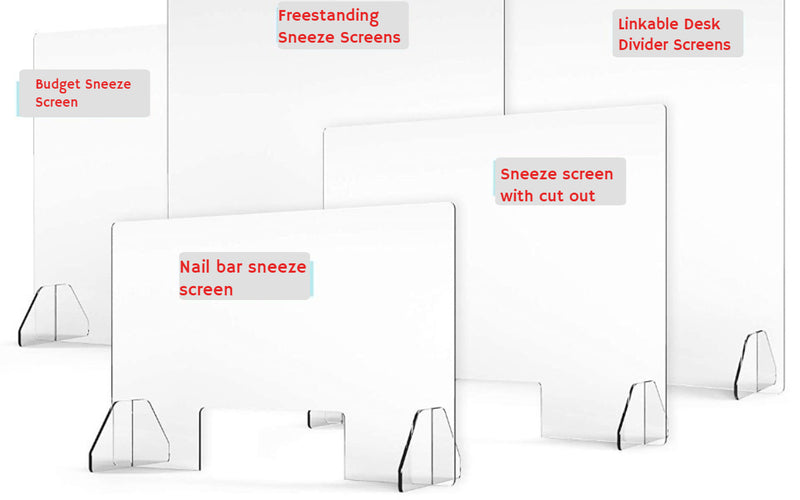Most sneeze guards are manufactured from some form of acrylic. The actual type of acrylic used may vary depending upon the size and style of the sneeze guard, the specific requirements of where the screen is to be used – and the cost.
Acrylic is often better known by various other names and brand names such as Plexi-glass or Perspex.
At the outbreak of the Coronavirus pandemic, many health organisations recommended the use of hygiene screens to provide a barrier between employees and customers, visitors, students etc. These swiftly became known as sneeze guards or sneeze screens and many manufacturers sold lots of the barriers to shops, schools, offices, warehouses, gyms, hospitality and loads more venues. Various styles were manufactured to suit different environments but lightweight, portable and freestanding sneeze guards became the most common options.
Why are sneeze guards made from acrylic?
As noted by the National Collaborating Centre for National Health
…Barriers are often made out of acrylic (Plexiglass) or polycarbonate plastics are lighter weight, more easily shaped, and have much greater impact resistance than glass…Physical barriers like acrylic or polycarbonate partitions are thought to provide some limited protection for individuals sharing the same space, first by preventing people from getting too close and also by preventing particles or droplets exhaled by one person from entering the breathing zone of another.
Using acrylic to manufacture the barriers bought many benefits. They were cheaper to manufacture than glass barriers, lighter and offered greater range of design and applications. Acrylic is virtually shatterproof so they were safer, and clear acrylic is more luminous than glass so vision either side of the barrier was not diminished.
In addition, acrylic is easy to clean. Most surfaces required only daily cleaning with warm water. Sanitising products could also be used, though they were not essential to a safe cleaning regimen

